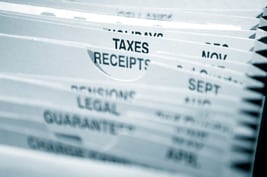Understanding the Fringe Benefits Tax
It is critical to note that FBT will now form a specific component of other taxation reviews.

It is critical to note that FBT will now form a specific component of other taxation reviews with ATO audit/review officers passing on their findings to the FBT audit team.
The limited resources of the FBT audit team has historically meant the SME sector largely operated free from FBT scrutiny. The game is clearly changing.
Are you providing fringe benefits?
Firstly it need to be determined if you are providing a benefit to your employees. According to the fringe benefits tax (FBT) legislation, a fringe benefit is a benefit provided in respect of employment. This effectively means a benefit is provided to somebody because they are an employee. The ’employee’ may even be a former or future employee.
You can use this checklist to work out whether or not you have an FBT obligation. You may have an FBT obligation if you answer yes to any of the following questions:
Do you make cars or other vehicles owned or leased by the business available to employees for private use?
Do you provide employees with loans at reduced interest rates?
Have you released an employee from an owed debt?
Have you paid or reimbursed a non-business expense an employee incurred?
Do you provide houses or units of accommodation to your employees?
Do you provide employees with living-away-from-home allowances?
Do you provide entertainment by way of food, drink or recreation to your employees?
Have you provided property, either free or at a discount to your employees?
Do any of your employees have a salary package arrangement in place?
Car fringe benefit
As one of the most common benefits provided, a car fringe benefit commonly arises where you make a car you own or lease available for the private use of an employee. A car is taken to be made available for private use by an employee on any day the car:
Is actually used for private purposes by the employee or associate.
Is not at your premises, and the employee is allowed to use it for private purposes.
Is garaged at their place of residence, regardless of whether they have permission to use it privately.
As a general rule, travel to and from work is private use of a vehicle. Private use of a motor vehicle that is not a car may give rise to a residual fringe benefit.
There are two ways to calculate a car fringe benefit. To be eligible to use both you must keep a logbook for a minimum of 12 weeks to determine the business use percentage. This percentage is good for 5 years before another log book must be started.It must also be remembered that if you do use the operating cost method, the luxury car tax threshold does not apply when working out the deemed interest and depreciation.
Next article find out about….employee contributions, directors’ benefits and consequences of non-compliance.
About Author Craig Ball
Craig Ball is a Charted Accountant at Bentley Partners with more than 7 years experience gained in mid tier firms in Brisbane, Sydney and Perth. He is passionate about tax and making sure that his clients receive the best available advice. In line with the Bentley Partners philosophy, I believe in planning your activities properly and not just waiting for the end of the year before turning your eye to the share that the ATO wants.